Introduction
The
ammonia pipeline Toliatti–Odessa was built in the late 70s–early
80s specifically for the transportation of the main products of the
Toliatti nitrogen plant for export. The end point of ammonia
pipeline is Odessa Port. There are several pumping stations along
the route of this pipeline (Fig. 1). These pump stations support the
correct pressure in ammonia pipeline. From the point view of
industrial safety these pump stations are the chemically
dangerous objects [4, 6, 15]. According
to the Law of Ukraine for high-risk objects, a PLAS (Emergency
Response Plan) document should be developed for such industrial
object. Prediction of contaminated zones and detection of
Dangerous Level of Contamination is the basis of this document.
Therefore, the actual task is to estimate the level of contamination
in working areas of the pump station in the case of
unplanned ammonia release.
Review of literature sources
To
solve the problem of chemical contamination zones formation in the
case of unplanned ammonia emissions analytical models are widely
used. For example, Berland model was used to predict air pollution
in the case of ammonia pipe rupture [6]:
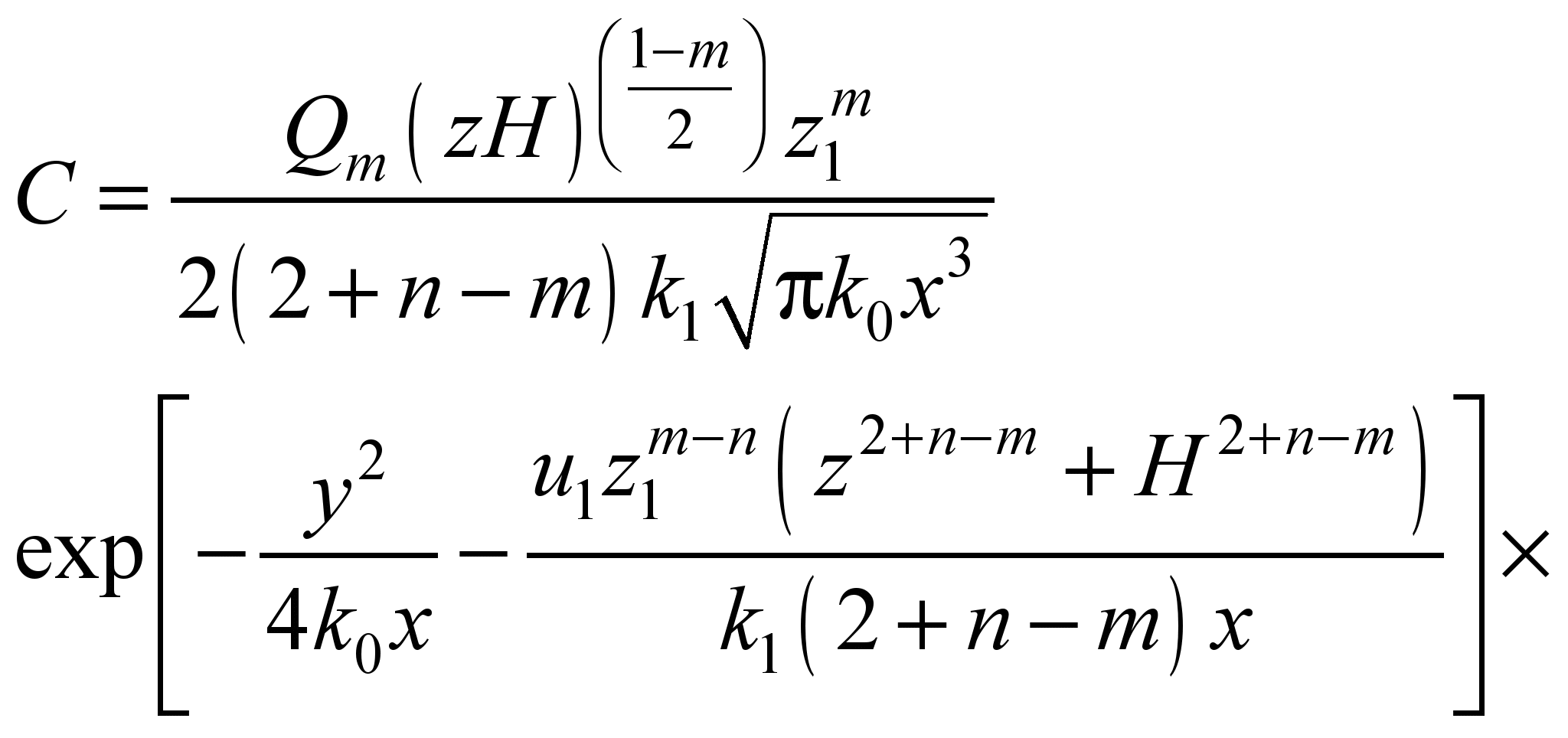
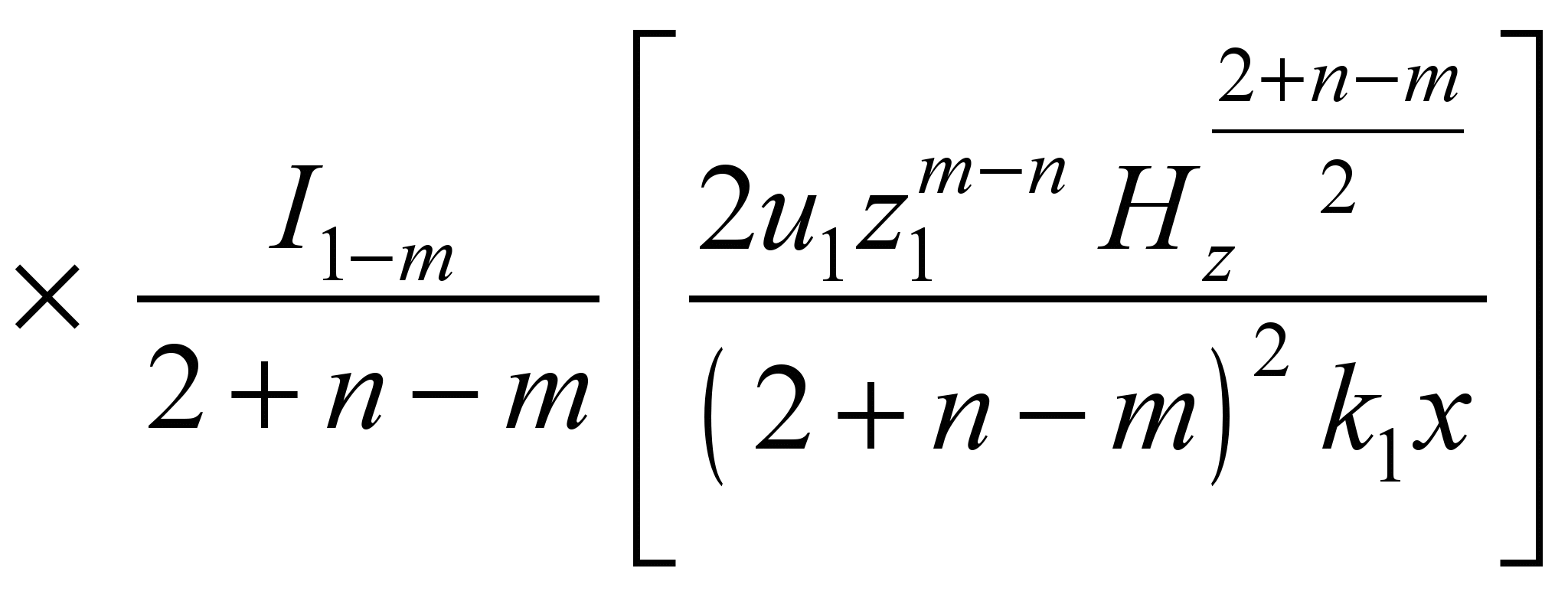 ,
,
Qт
– emission rate; H
– height of emission source; k0,
k1,
m –
empirical constants; I
– Bessel function; C-concentration.
Another
approach for assessing the zones of chemical contamination is the
application of the
Gaussian plume
model [2, 3, 10-14].
The use of the
analytical models or Gaussian
models allow to calculate quickly zones of chemical contamination.
On the other hand, these models have significant
lacks because they cannot be used
when we model toxic
chemical dispersion among
buildings. For this purpose, it is necessary to use numerical
models [1, 8, 9] which are based on Fluid Dynamics equations. In
Ukraine, there is a certain deficit of such models [8, 9].
Worthy of note that the
application Navier–Stokes equations for this purpose
demands using of
very fine
computational grid and much
computational time.
Purpose
The
purpose of this paper is to develop a numerical model for
computing the chemical contamination of air on the territory of the
ammonia pump station for unplanned ammonia release (accidental
release or terror
act).
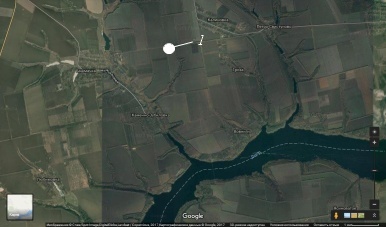
Fig. 1. GOOGLE’s image of
Ammonia Pump Station:
1
– pump station
Mathematical formulation
To
simulate the pollutant dispersion in the atmosphere 2D transport
model is used [5, 7]

 , (1)
, (1)
where
С
is mean concentration; u,
v are the
wind velocity components;
is the parameter taking into
account the process of pollutant chemical decay or washout;
μ=(μх
, μy
) are
the diffusion coefficients; Q
is intensity of point source emission;
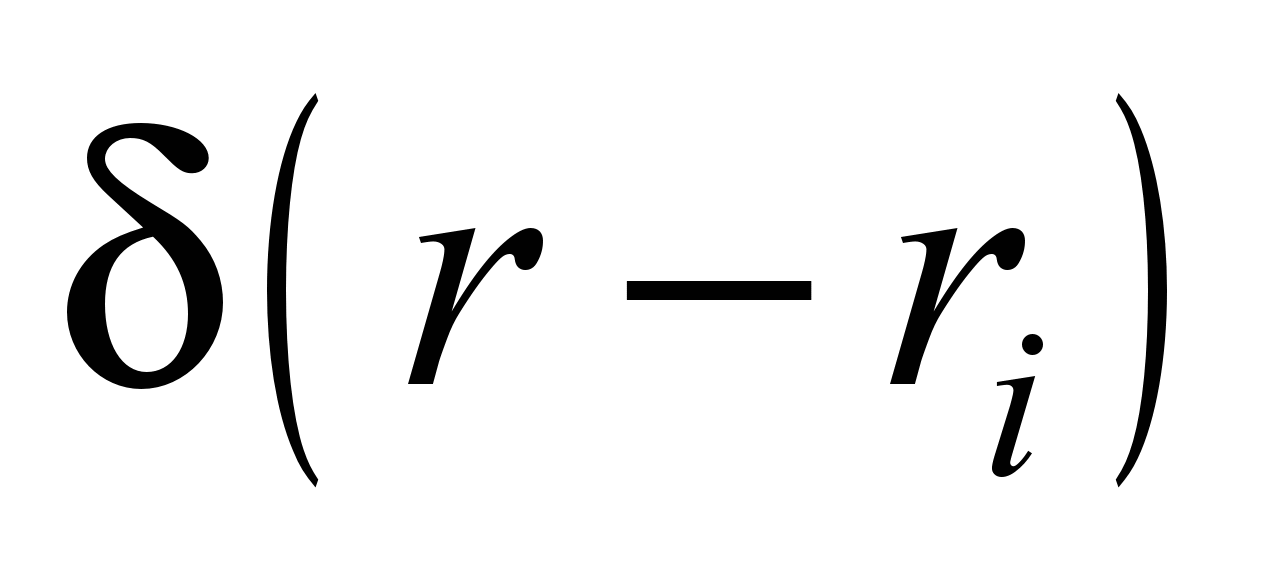 are Dirak delta function; ri=
(xi
,
yi
)
are the coordinates of the point source .
are Dirak delta function; ri=
(xi
,
yi
)
are the coordinates of the point source .
To
simulate the wind flow in the case of the buildings at the territory
of Pump Station the 2D model of potential flow is used [7]
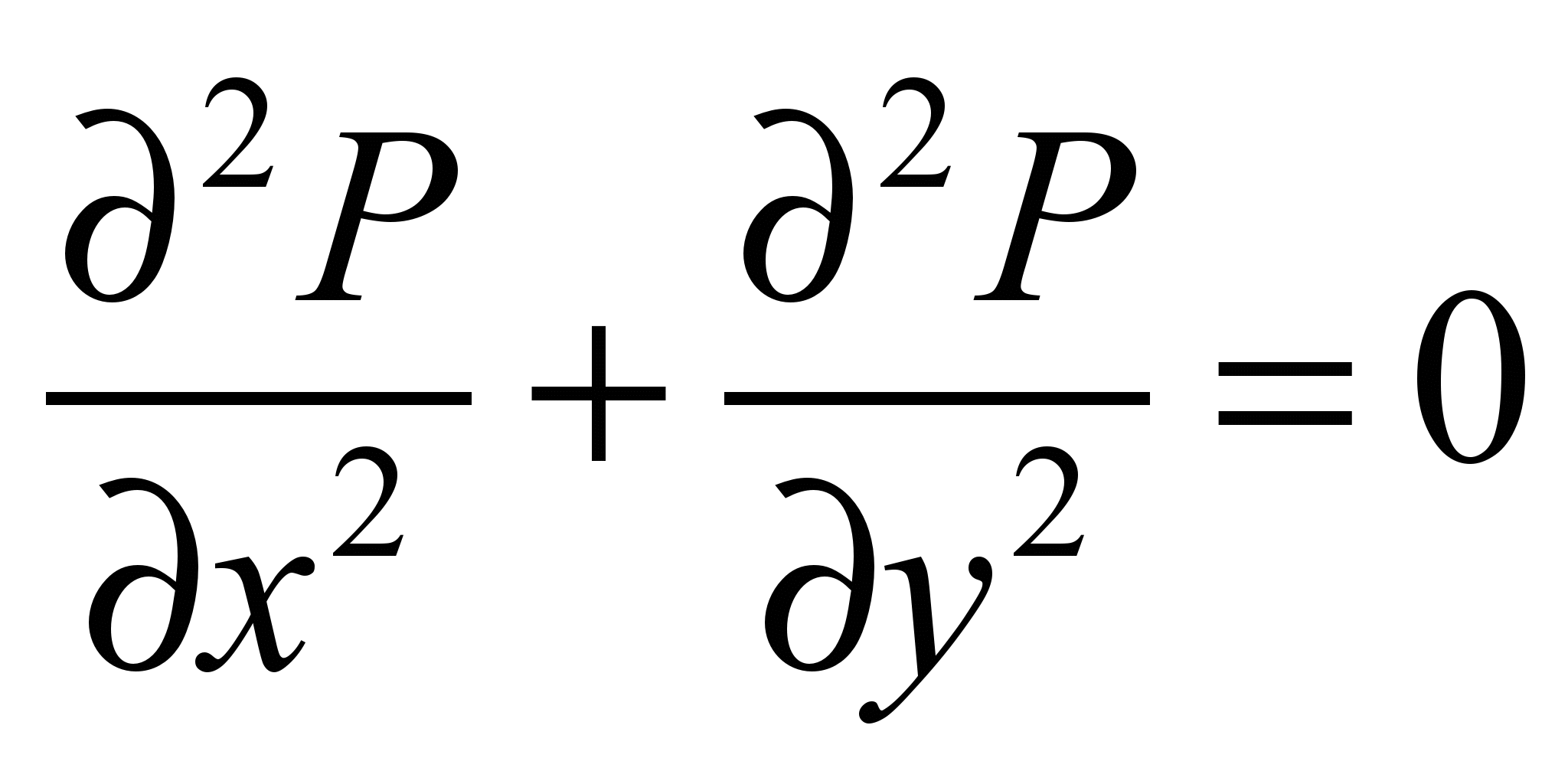 , (2)
, (2)
where
Р is
the potential of velocity.
The
wind velocity components are calculated as follows:
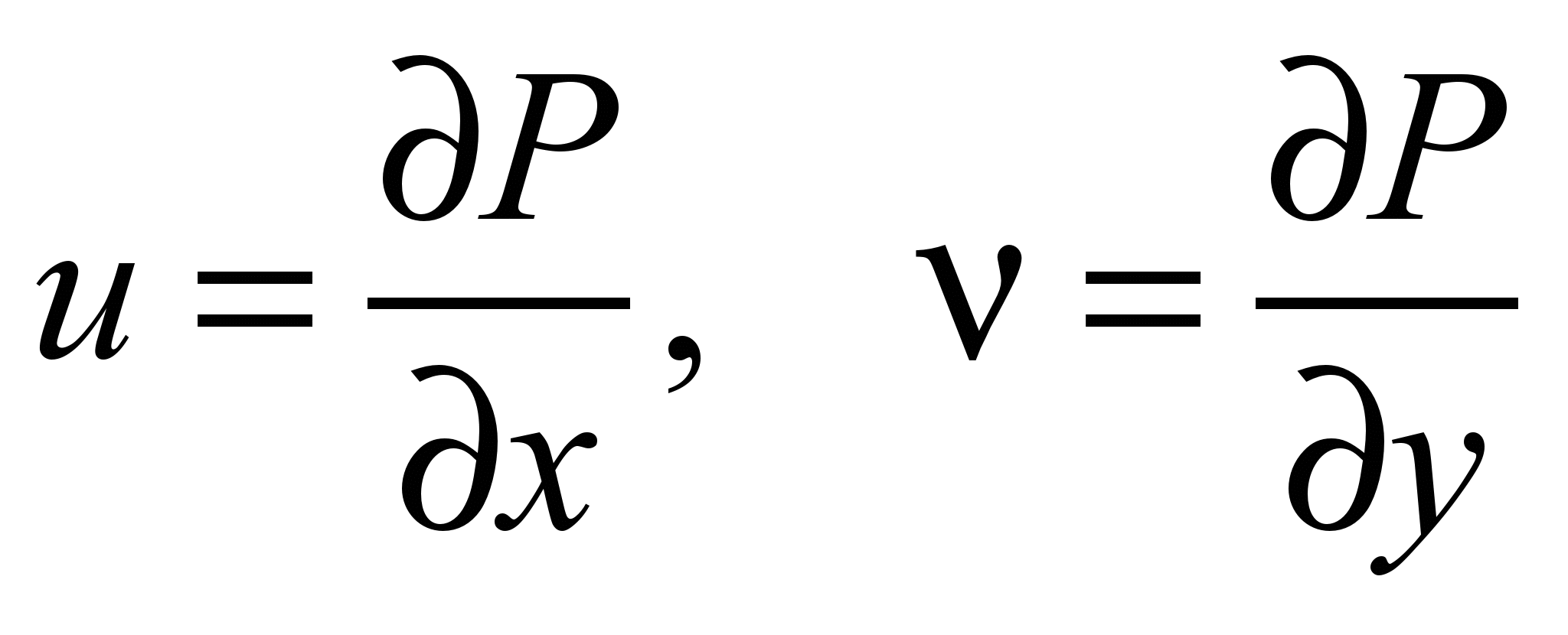 .
.
Boundary
conditions for modeling equations are discussed in [5, 7].
Numerical model
The
computation of wind pattern and pollutant dispersion is carried out
on rectangular grid. To
create the form of buildings we use porosity technique or so called
«markers
method» [1, 7].
Markers are used to separate the
computational cells where flow takes place from the cells which
correspond to buildings.
Main
features of
the finite difference schemes which we use for the numerical
integration of modeling equations are shown below.
To
solve equation (1) we use change – triangle difference scheme [1,
7]. The time dependent derivative in
Eq. (1) is approximated as follows:
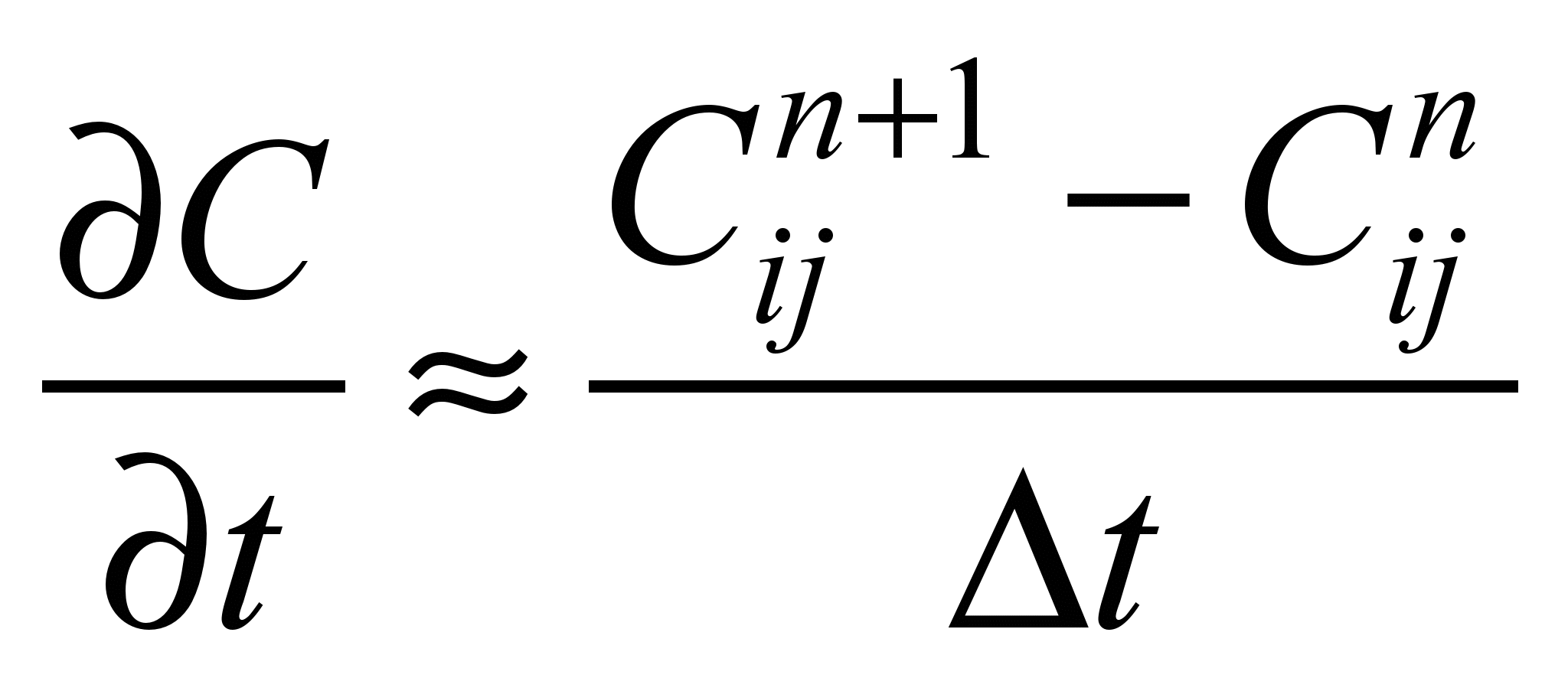 .
.
At
the first step convective derivatives are represented in the
following way:
 ;
;
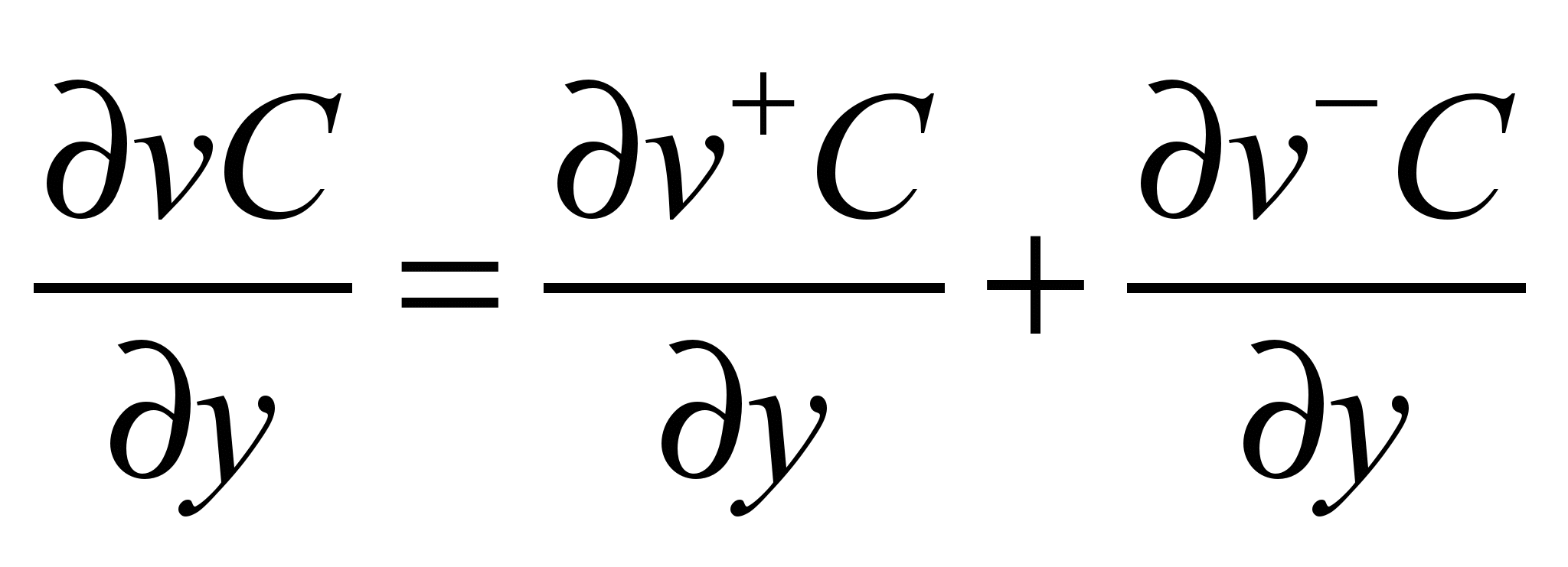 ;
;
where
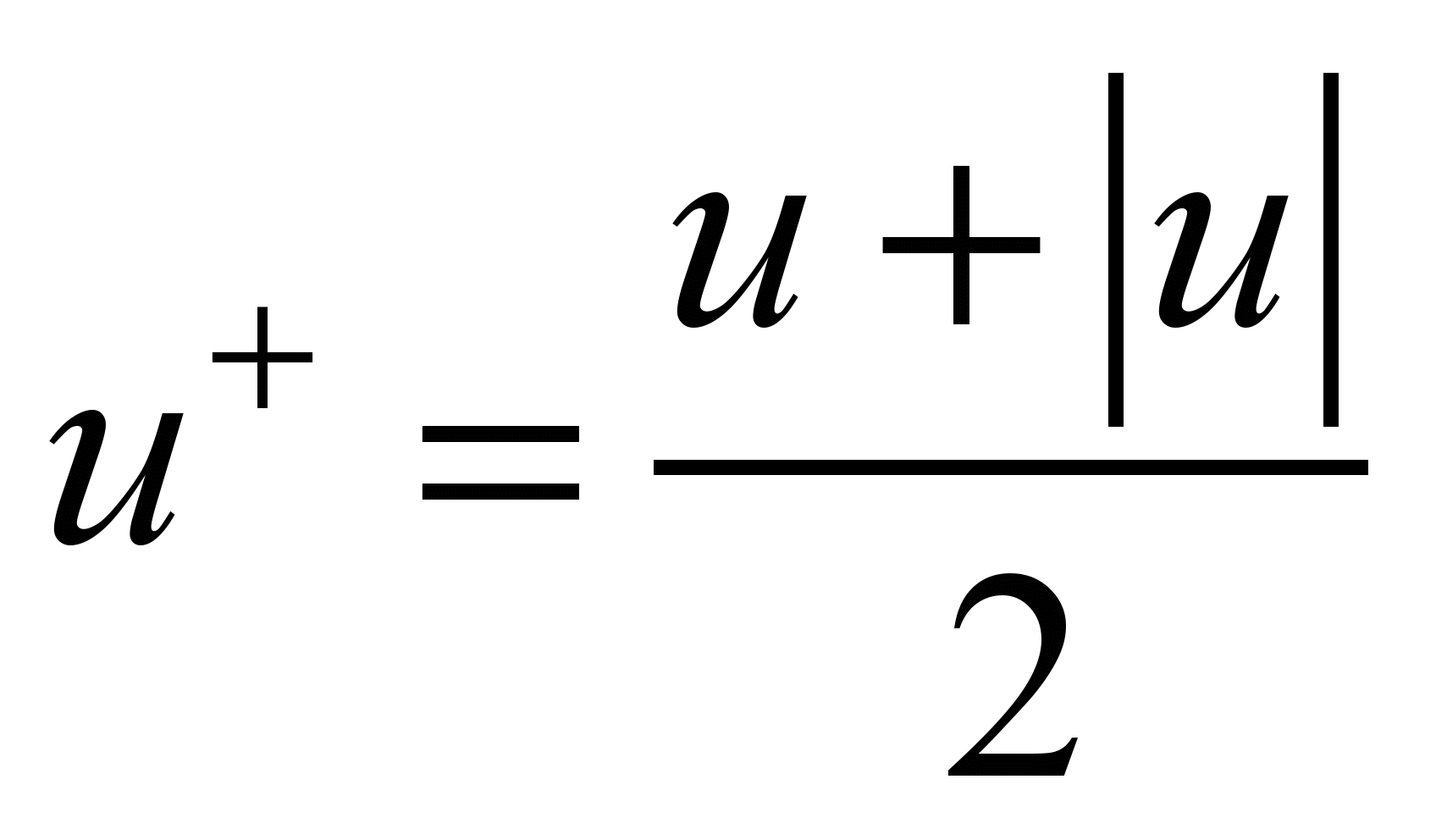 ;
;
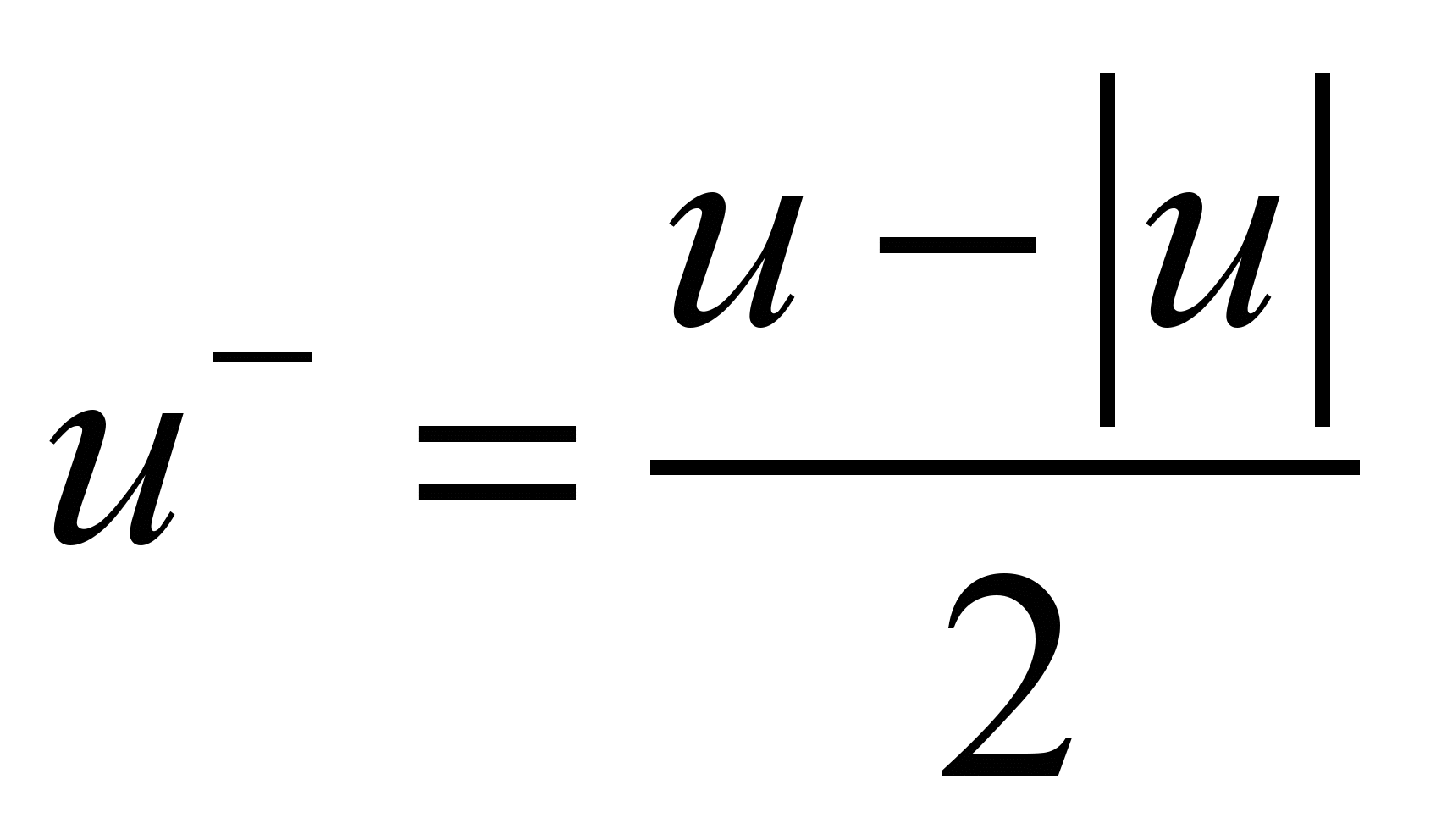 ,
,
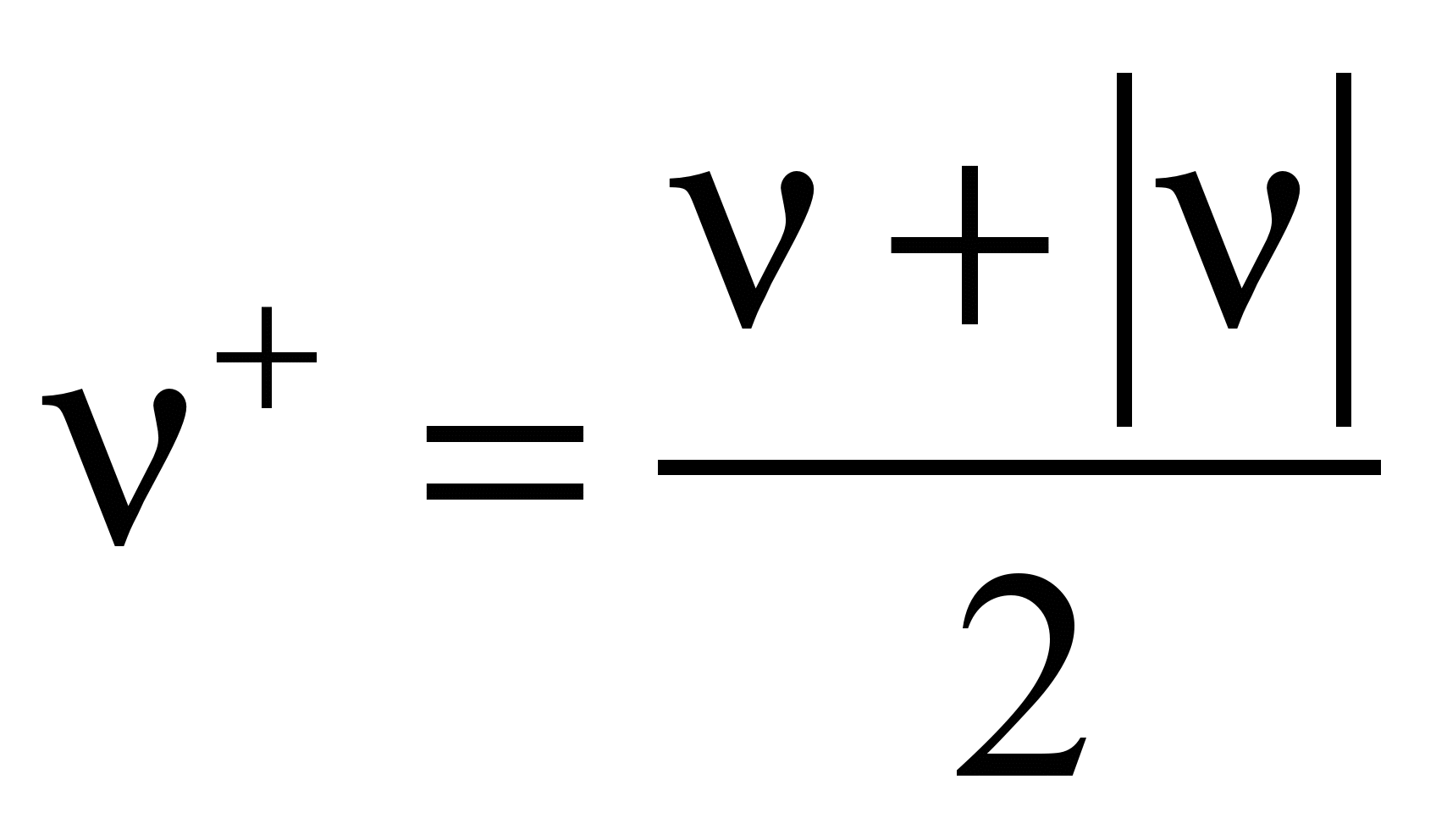 ;
;
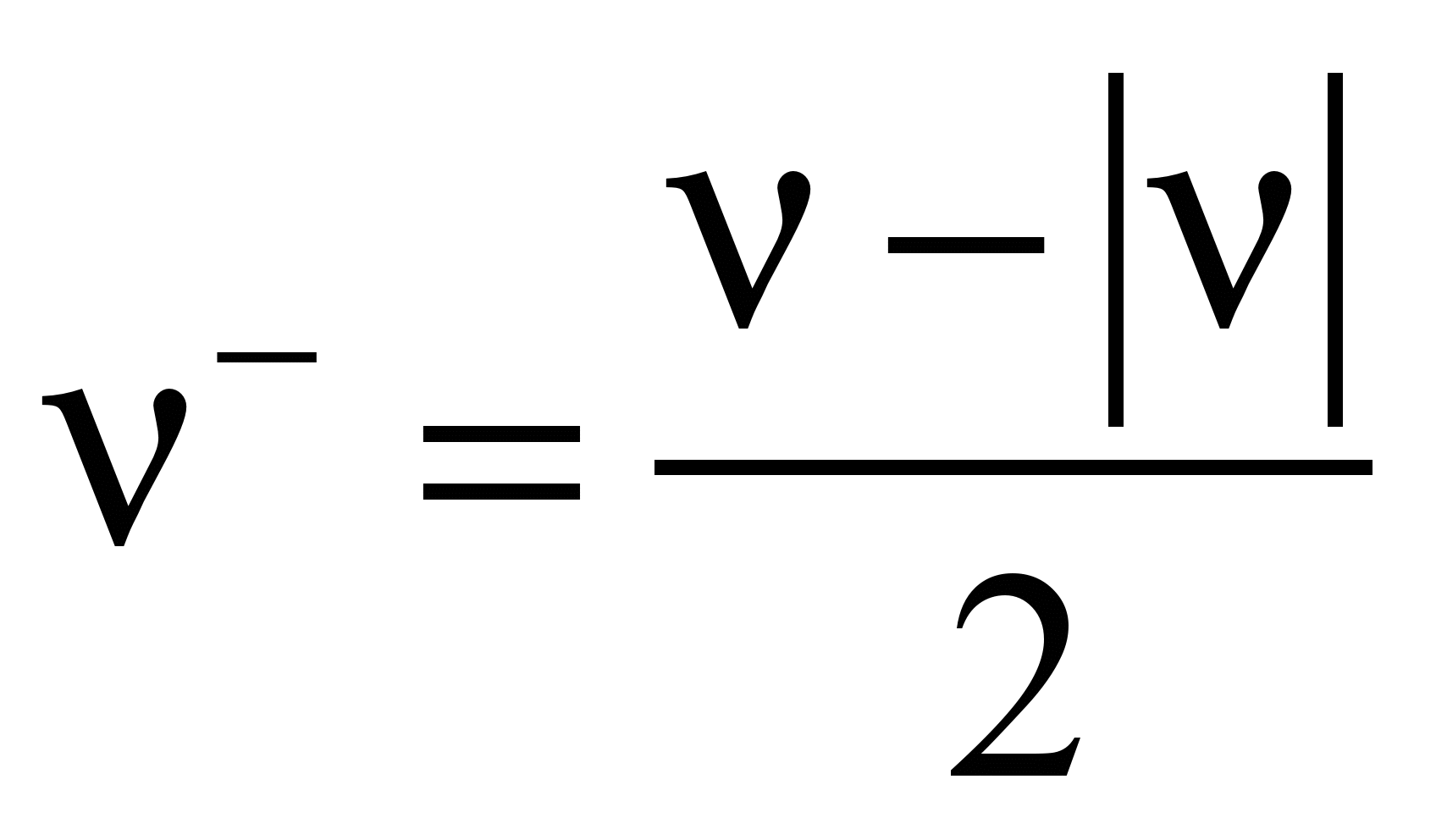 .
.
At
the second step the convective derivatives are approximated as
follows:
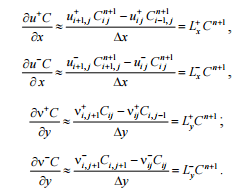
The
second order derivatives are approximated as follows:




In
these expressions

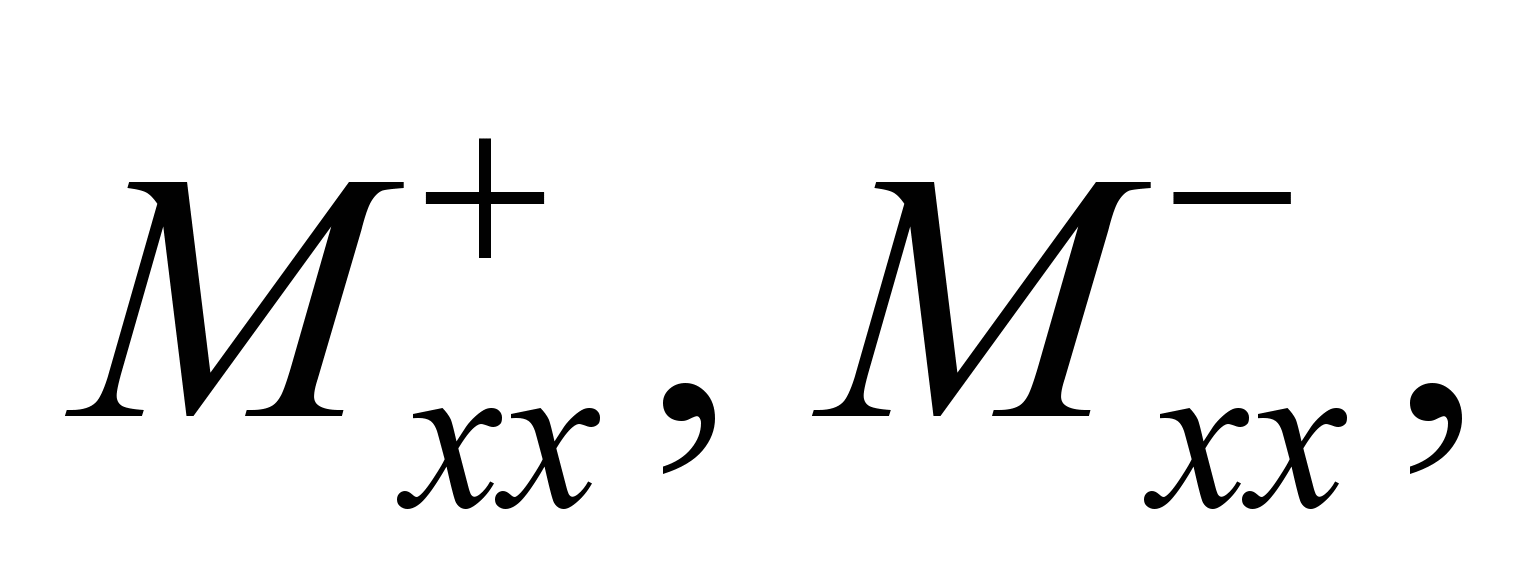
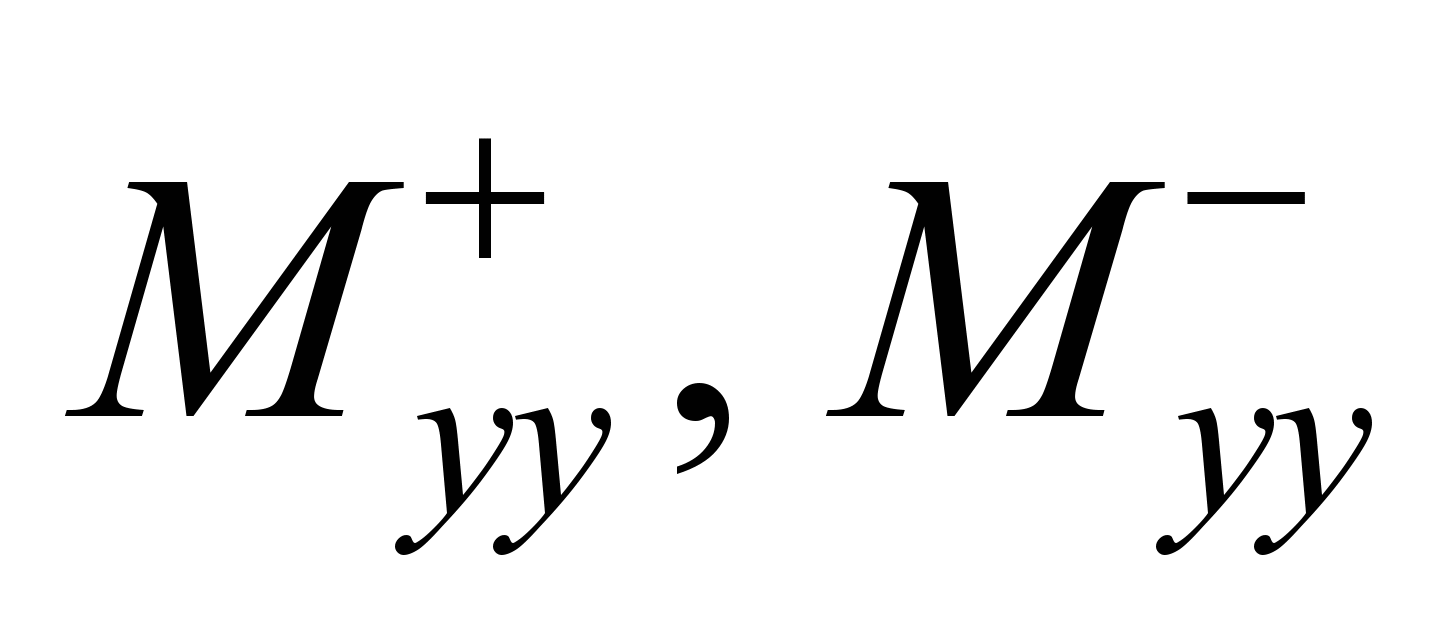 are the difference operators. Using these expressions, the
difference scheme for the transport equation can be written as
follows:
are the difference operators. Using these expressions, the
difference scheme for the transport equation can be written as
follows:

Solution
of the transport equation in finite – difference form is split in
four steps on the time step of integration dt:
–
at the first
step (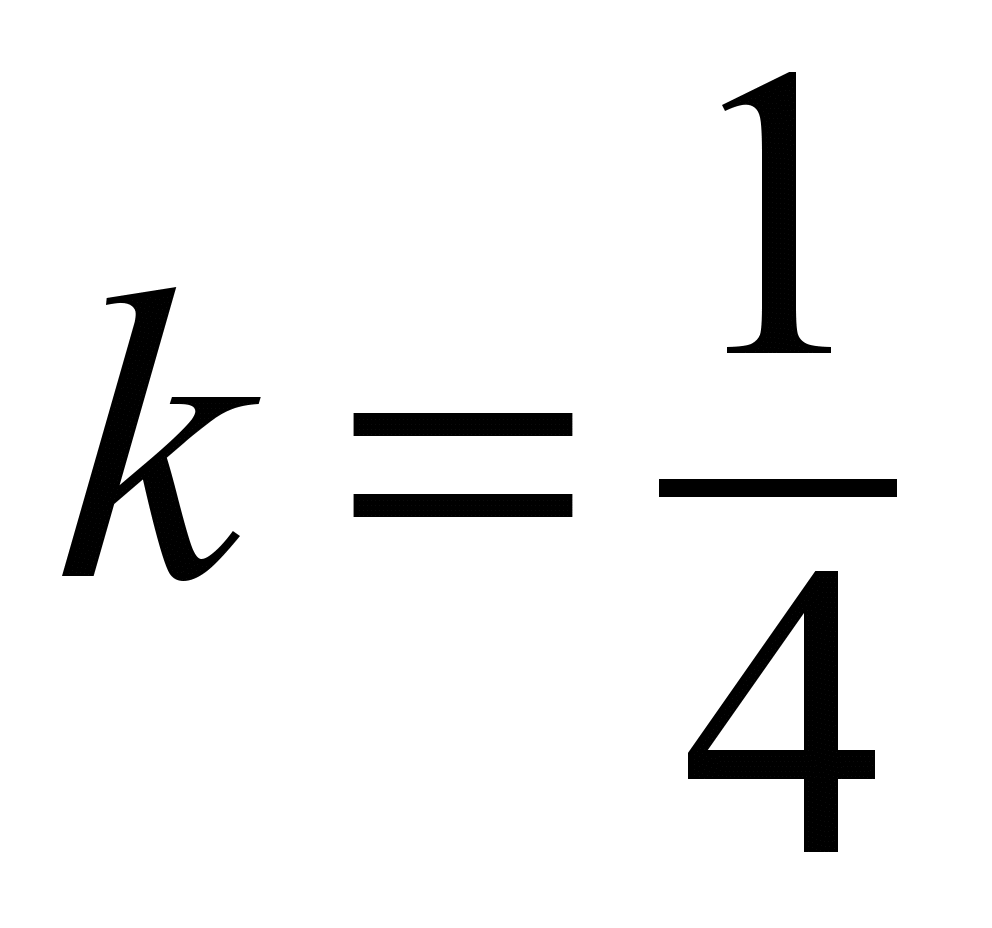 )
the difference equation is:
)
the difference equation is:

–
at the
second step (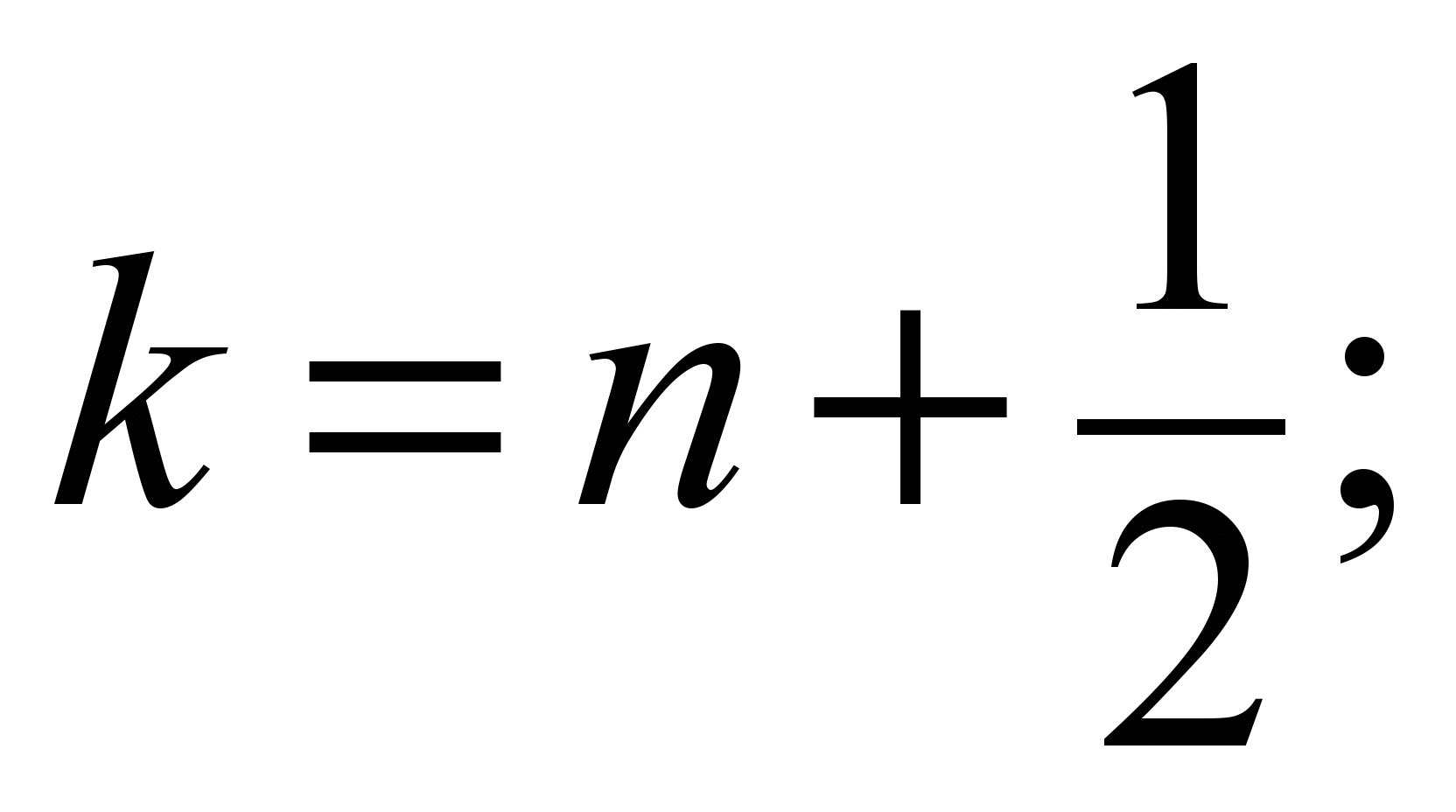
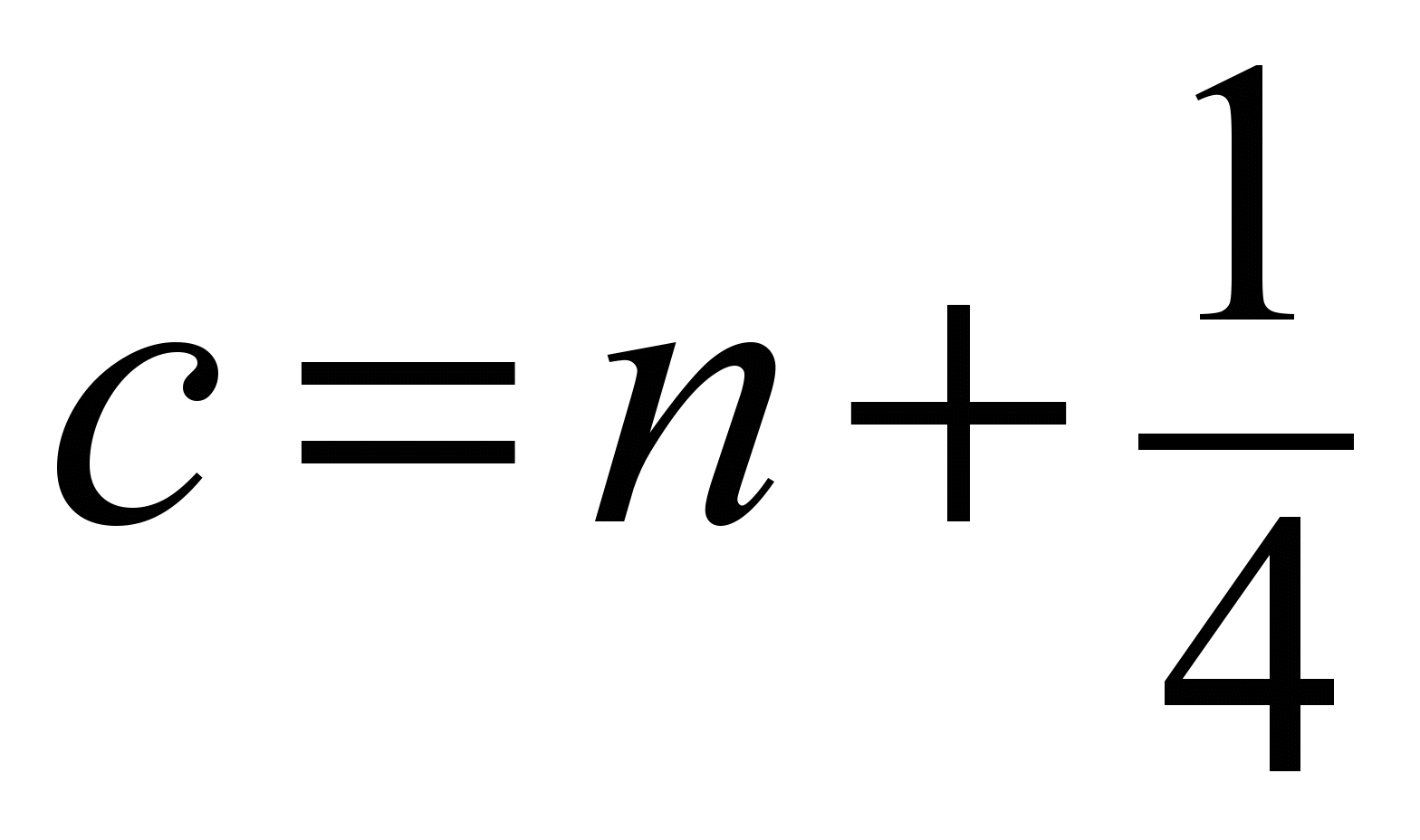 ) the
difference equation is:
) the
difference equation is:

–
at the third
step ( )
the expression (4) is used;
)
the expression (4) is used;
–
at the
fourth step ( )
the expression (3) is used.
)
the expression (3) is used.
At
the fifth step (at this step the influence of the source of
pollutant emission is taken into account) the following
approximation is used:
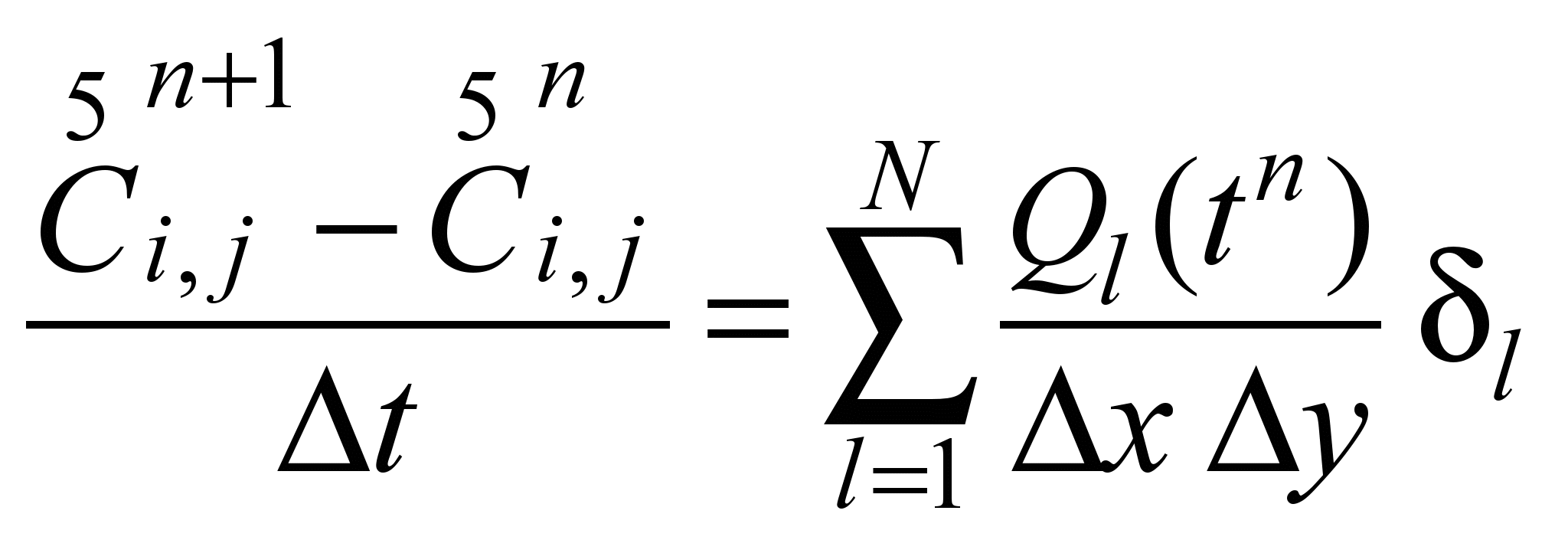 .
.
Function
l
is equal
to zero
in all
cells accept
the cells where source of emission is
situated.
This
difference scheme is implicit and absolutely steady but the
unknown concentration C
is calculated using the explicit formulae at each step (so called
«method of
running calculation»).
To
solve equation (2) we transform it to the «evolution
type»
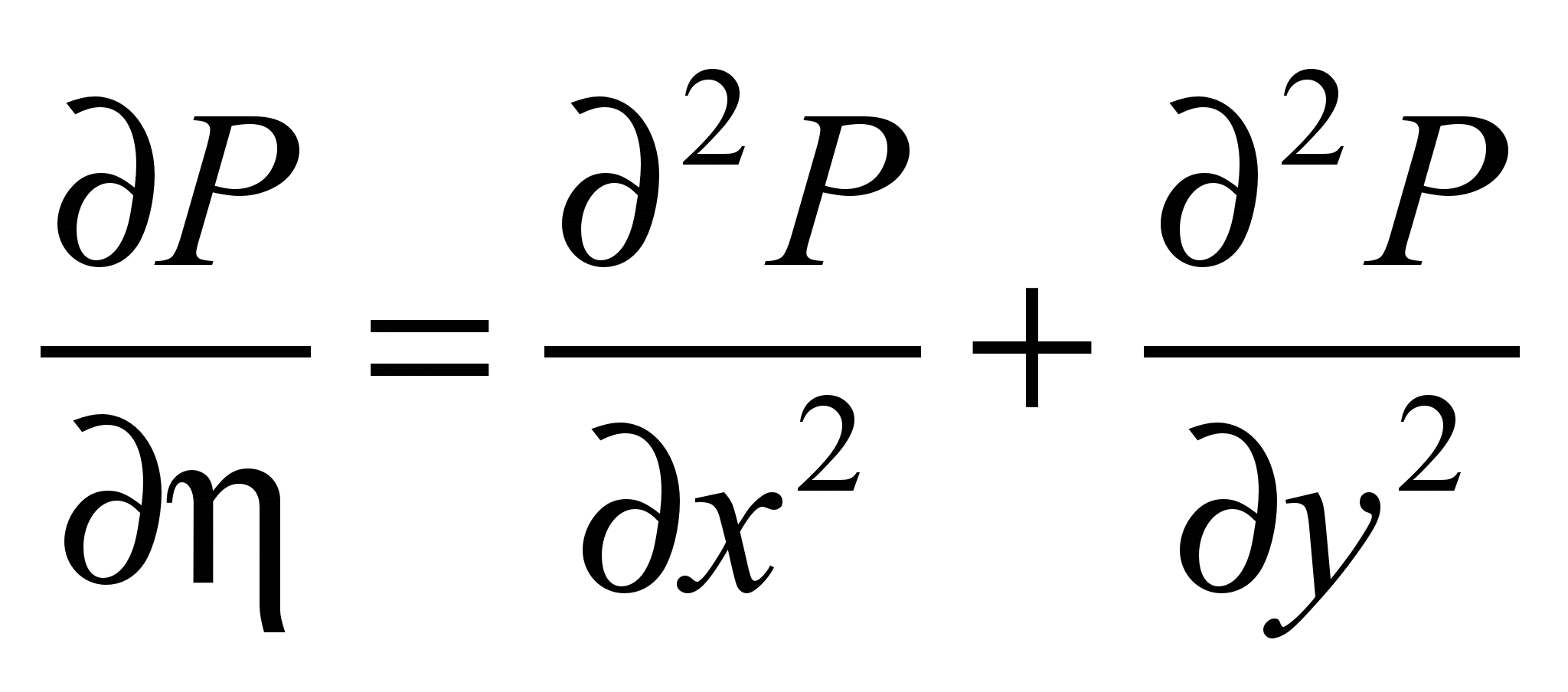 , (3)
, (3)
where
 is ’fictitious’ time.
is ’fictitious’ time.
For
 the solution of equation (3) tends to the solution of equation (2).
the solution of equation (3) tends to the solution of equation (2).
To
solve equation (3) A. A. Samarskii’s change-triangle
difference scheme is used. According to this scheme the solution of
equation (3) is split into two steps:
–
at the first
step the difference equation is


–
at the
second step the difference equation is


From
these expressions the unknown value Pi,j
is determined using the explicit
formulae at each step of splitting («method
of running calculation»).
The calculation is completed if the
condition

is
fulfilled (where
 is a small number, n is the number of iteration). The components of
velocity vector are calculated on the sides of computational cell as
follows
is a small number, n is the number of iteration). The components of
velocity vector are calculated on the sides of computational cell as
follows
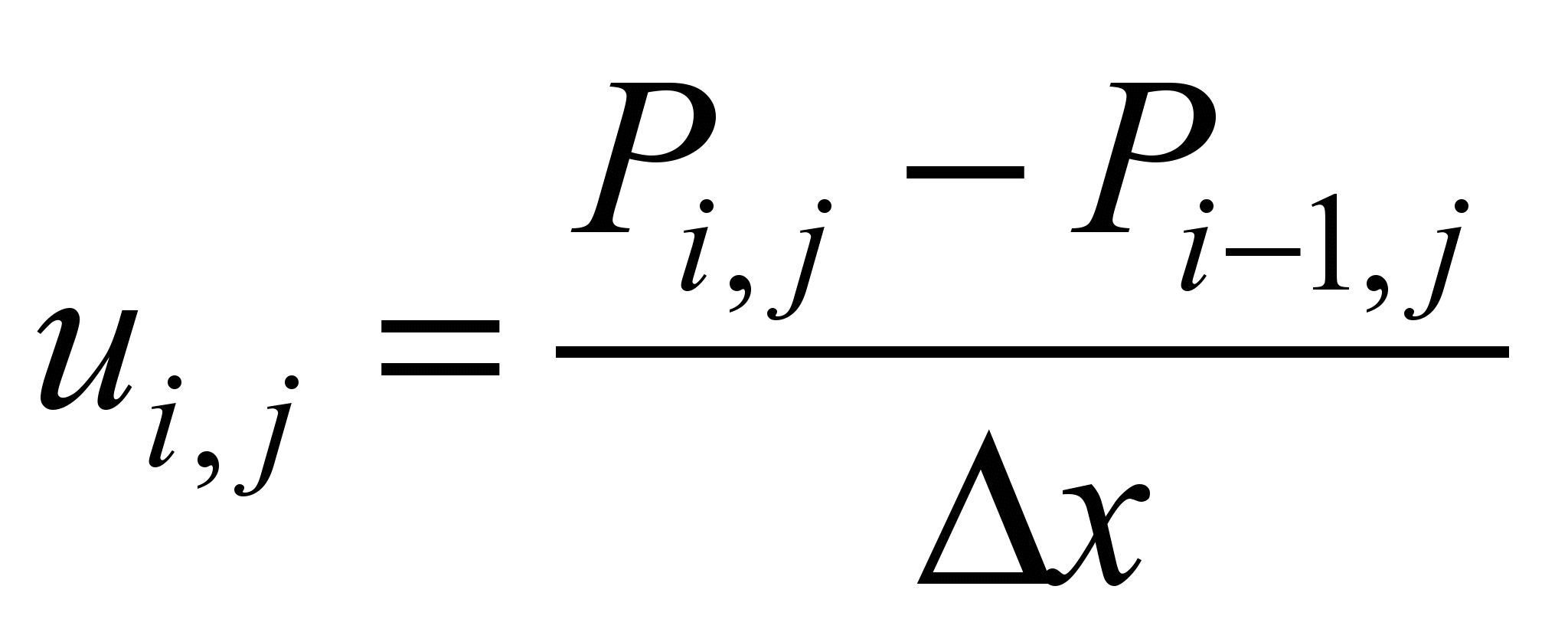 ,
,
 .
.
Calculation
of velocity components on the sides of computational cell allows to
develop the conservative numerical scheme for pollutant
dispersion.
For
coding of difference formulae, we used FORTRAN language.
Findings
Developed
numerical model and code were used to compute ammonia concentrations
at the territory of ammonia pump station in the case of unplanned
release (Fig.2). It was supposed that release takes place near
building with ammonia pumps (Fig. 3, 4). Sketch of computational
region is shown in Figure 4. Figures 5, 6 show modeling results for
ammonia emission. Emission rate is Q=17
kg/s and was chosen from literature [6].
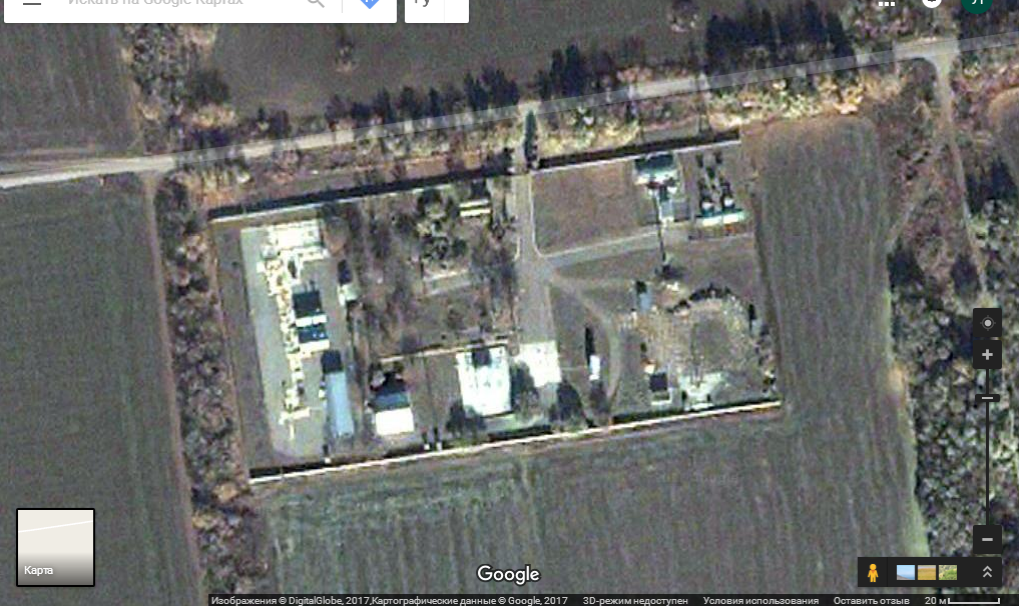
Fig. 2. Ammonia pump station
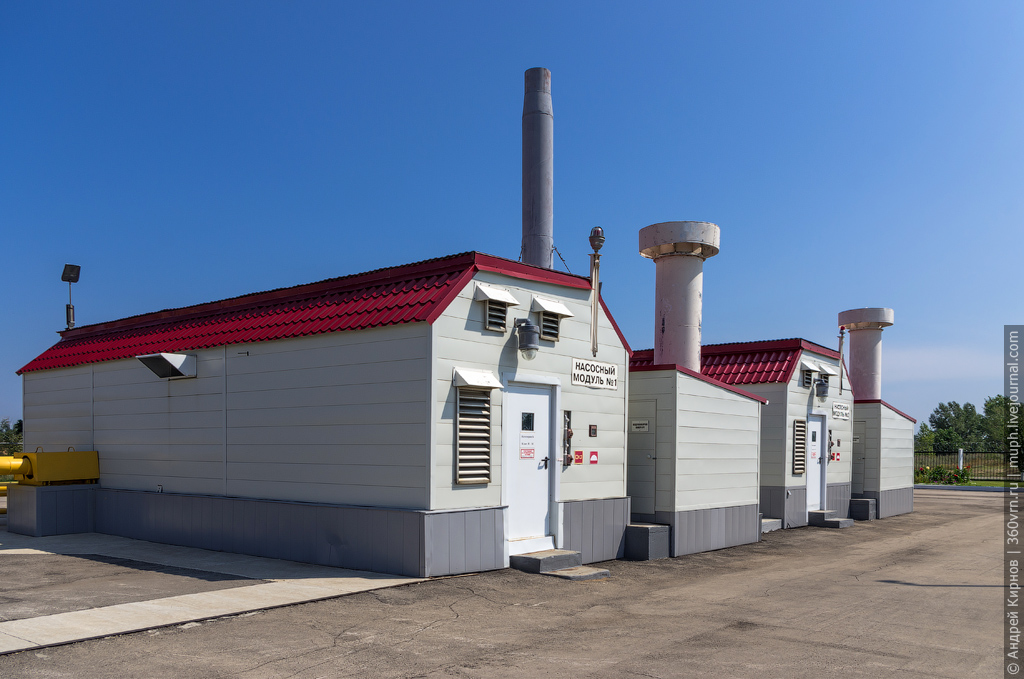
Fig. 3. Buildings with ammonia pumps
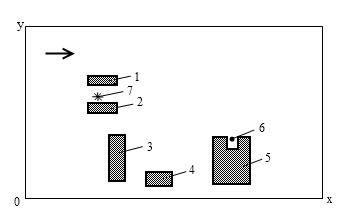
Fig. 4. Sketch of computational region
(ammonia
pump station): 1,
2 –
buildings with
ammonia pumps, 3, 4, 5
– industrial buildings on the territory of station;
6
– receptor
position; 7
– position of
ammonia release
at
the territory of pump station

Fig. 5. Computed ammonia concentration, t=250 s
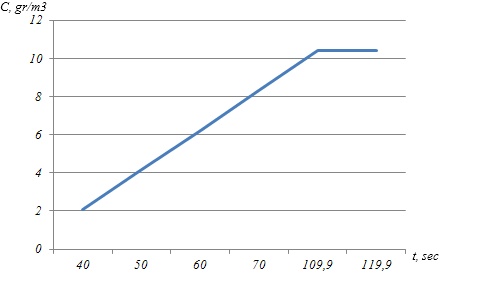
Fig. 6. Ammonia concentration at receptor
spot (position No. 6, Fig. 4)
As
we can see from Fig. 5 plume of toxic chemical quickly covers all
the territory of ammonia pump station. To estimate the danger of
such unplanned release we computed the ammonia concentration near
one building at the territory of this station. Receptor position
(position of person) is shown in Fig.4. Dynamics of ammonia
concentration at this spot is shown in Fig.6. It is clear that the
people affected will die at the territory in the case of this
unplanned release because the ammonia concentration exceeds Level of
Concern which is 20 mg/m3.
Worthy
of note that computational time was 5 sec. It allows to use the
developed model for prediction of air pollution during PLAS
development.
Originality and practical
value
A
2D numerical model has been developed to compute contamination zones
among buildings during the accidental emission of a hazardous
substance. The presented 2D numerical model is based on the
application of the fundamental equations of aerodynamics and
mass transfer.
The
peculiarity of the developed model is the use of standard
meteorological information and quick calculation.
Conclusions
Numerical
2D numerical model for estimating the level of atmospheric air
pollution during the emergency emission of hazardous substances is
proposed. Proposed numerical model allows to predict level of
pollution of atmospheric air among buildings. The solution of the
aerodynamic problem is based on the numerical integration of the
equation for the velocity potential. To predict the air pollution,
the equation of mass transfer is used. The mass transfer equation
takes into account the convective and diffusive transport of
pollutants in atmosphere, taking into account buildings situated
near the source of emission. Emission of a dangerous substance is
simulated by a point source, which is modeled using Dirac’s delta
function.
Further
improvement of the model should be carried out in the direction of
creating a 3D numerical model that takes into account the
formation of vortices in the air flow.
LIST OF REFERENCE LINKS
Беляев,
Н. Н. Моделирование нестационарных
процессов аварийного загрязнения
атмосферы : монография / Н. Н. Беляев,
А. В. Берлов, П. Б. Машихина. – Днепропетровск
: Акцент ПП, 2014. – 127 с.
Берлянд,
М. Е. Прогноз и регулирование загрязнения
атмосферы / М. Е. Берлянд. – Ленинград
: Гидрометеоиздат, 1985. – 273 с.
Бруяцкий,
Е. В. Теория атмосферной
диффузии радиоактивных выбросов / Е.
В. Бруяцкий. – Киев : Ин-т
гидромеханики НАН Украины, 2000. – 443 с.
Заказнов,
В. Ф. Распространение аммиака при
разгерметизации аммиакопровода,
емкостей /В. Ф. Заказнов,
Л. А. Куршева // Исследования
и разработки по созданию магистральных
аммиакопроводов и складов жидкого
аммиака : тр.
ГИАП. – Москва, 1985. – С.
57.
Марчук,
Г. И. Математическое
моделирование в проблеме окружающей
среды / Г. И. Марчук.
– Москва : Наука,
1982. – 320 с.
Цыкало,
А. Л. Испарение и рассеивание аммиака
при его разливах и утечках. Серия:
Азотная промышленность / А. Л. Цыкало,
И. И. Стрижевский, А. Д. Баглет. – Москва
: НИИТЭХИМ, 1982. – 48 с.
Численное
моделирование распространения
загрязнения в окружающей среде / М. З.
Згуровский, В. В. Скопецкий, В. К. Хрущ,
Н. Н. Беляев. – Київ :
Наук. думка, 1997. – 368 с.
Biliaiev,
M. M. Numerical simulation of the atmosphere pollution after
accident at the «Tolliaty-Odessa» ammonia pipe / M. M. Biliaiev,
L. V. Amelina, M. M. Kharytonov // NATO Science for Peace and
Security. Series C: Environmental security. – 2013. – P.
391–395. doi:
10.1007/978-94-007-5577-2_66.
Biliaiev,
M. M. The Numeric Forecast of Air Pollution Caused by a Blasting
Accident in the Enterprise Responsible for Rocket Fuel Utilization
in Ukraine / M. M. Biliaiev, M. M. Kharytonov // NATO
Science for Peace and Security. Series C: Environmental Security.
– 2012. –
P. 313–327. doi: 10.1007/978-94-007-5034-0_25.
Daly,
A. Accident reconstruction and plume modeling of an unplanned
ammonia release / A. Daly, P. Zanetti, M. Jennings // Air Pollution
XX. WIT Transactions on Ecology and The Environment. – 2013. –
Vol. 174. – P. 3–13. doi:10.2495/AIR130011.
Dispersion
Modeling of Hydrogen Sulfide at Cimarex Rands Butte Project Using
ALOHA / Bureau of Land Management
Pinedale Field Office, SWCA Environmental Consultants. – Wyoming,
2010. – 26 p.
Janos,
T. Atmostheric spreading model for ammonia released from the
poultry house [Electronic resource] / T. Janos. E. Gorliczay,
J. Borbely // Ecotoxicologie, Zootehnie si Tehnologii de Industrie
Alimentara. – 2016. – Vol. XV/B. – P. 331–337. –
Available at:
http://protmed.uoradea.ro/facultate/publicatii/ecotox_zooteh_ind_alim/2016B/ipa/17%20Tamas_Janos.pdf.
– Title from the screen. – Accessed : 30.05.2017.
Mellsen,
S. B. A Fortran Program for Calculating Chemical Hazards Using the
NATO Stanag 2103/ATP-45 Algorithm [Electronic resource] / S. B.
Mellsen // Suffield memorandum No. 1275. – Alberta : Defence
Research Establishment Suffield, 1989. – 34 p. – Available at:
http://oai.dtic.mil/oai/oai?verb=getRecord&metadataPrefix=html&identifier=ADA214763.
– Title from the screen. – Accessed : 30.05.2017.
The
analysis of the use of mathematical modeling for emergency planning
purposes [Electronic resource] / O. Zavila, P. Dobeš, J.
Dlabka, J. Bitta // Bezpecnostni vyzkum. The science for population
protection. – 2015. – No. 2. – P. 1–9. – Available
at: http://www.population-protection.eu/prilohy/casopis/30/213.pdf.
– Title from the screen. – Accessed : 30.05.2017.
The
Pentagon Shield Field Program: Toward Critical Infrastructure
Protection / T. Warner,
P. Benda, S. Swerdlin [et al.] //
Bulletin of the American Meteorological
Society. – 2007. – Vol.
88. – Iss. 2. – P. 167–176. doi:
10.1175/BAMS-88-2-167.
Л. В. АМЕЛІНА1*,
М. М. БІЛЯЄВ2
1*Каф. «Гідравліка
та водопостачання»,
Дніпропетровський національний
університет
залізничного транспорту
імені академіка В. Лазаряна, вул.
Лазаряна, 2, Дніпро,
Україна, 49010, тел.
+38 (056) 273 15 09,
ел. пошта
gidravlika2013@mail.ru,
ORCID 0000-0002-8525-7096
2*Каф. «Гідравліка
та водопостачання», Дніпропетровський
національний університет
залізничного
транспорту імені академіка В. Лазаряна,
вул. Лазаряна, 2, Дніпро,
Україна, 49010,
тел. +38 (056) 273 15 09,
ел.
пошта gidravlika2013@mail.ru,
ORCID 0000-0002-1531-7882
ЧИСЕЛЬНЕ МОДЕЛЮВАННЯ ЗАБРУДНЕННЯ
ПОВІТРЯ В РАЗІ РАПТОВОГО ВИКИДУ АММІАКУ
Мета.
Дослідження спрямоване на розробку
моделі швидкого обчислення, яка
враховувала б метеорологічні параметри
та будівлі, котрі знаходяться поблизу
джерела токсичного викиду. Методика.
Розроблена модель заснована на рівнянні
для потенційного потоку та рівнянні
розсіювання забруднюючих речовин.
Рівняння потенційного потоку
використовується для обчислення моделі
вітру між будівлями, а для вирішення
рівняння потенційної течії – неявна
різницева схема Самарського. Неявна
поперемінно-трикутна різницева схема
застосовується для вирішення рівняння
масопереносу. Чисельне інтегрування
здійснюється за допомогою прямокутної
різницевої сітки. Метод маркування
(«метод маркерів»)
вживається для створення форми великої
розрахункової області. Викид аміаку
моделюється з використанням Дельта
функції для точкового джерела. Результати.
Розроблена двомірна чисельна модель
відноситься до класу «діагностичні
моделі».
Ця модель має на увазі основні фізичні
фактори, що впливають на процес
розсіювання забруднюючих речовин в
атмосфері. Модель враховує вплив
будівель на розсіювання забруднюючих
речовин. На основі розроблених чисельних
моделей був проведений обчислювальний
експеримент для оцінки рівня токсичного
хімічного забруднення в разі раптового
викиду аміаку на аміачній насосній
станції. Наукова
новизна. Розроблена
авторами чисельна модель дозволяє
розрахувати двомірну модель вітру
серед будівель та розсіювання
забруднюючих речовин у разі раптового
викиду аміаку. Модель дозволяє виконувати
швидкі розрахунки забруднення атмосфери.
Практична значимість.
Модель можливо використовувати при
розробці ПЛАСа (план ліквідації аварійних
ситуацій).
Ключові слова: забруднення
повітря; раптовий викид; токсичні
хімічні речовини; чисельне моделювання
Л. В. АМЕЛИНА1*, Н. Н. беляев2
1*Каф. «Гидравлика
и водоснабжение», Днепропетровский
национальный университет
железнодорожного
транспорта имени академика В. Лазаряна,
ул. Лазаряна, 2, Днипро,
Украина, 49010, тел.
+38 (056) 273 15 09,
эл. почта
gidravlika2013@mail.ru,
ORCID 0000-0002-8525-7096
2Каф.
«Гидравлика и водоснабжение»,
Днепропетровский национальный
университет
железнодорожного транспорта
имени академика В. Лазаряна, ул. Лазаряна,
2, Днипро,
Украина, 49010, тел. +38 (056) 273 15 09,
эл. почта
gidravlika2013@mail.ru,
ORCID 0000-0002-1531-7882
ЧИСЛЕННОЕ МОДЕЛИРОВАНИЕ
ЗАГРЯЗНЕНИЯ
ВОЗДУХА В СЛУЧАЕ ВНЕЗАПНОГО
ВЫБРОСА
АММИАКА
Цель.
Исследование направлено
на разработку быстрой расчетной модели,
которая учитывала б метеорологические
параметры и здания, расположенные
вблизи источника токсического химического
выброса. Методика.
Разработанная модель основана на
уравнении для потенциального потока
и уравнении дисперсии загрязняющих
веществ. Уравнение потенциального
потока используется для вычисления
модели ветра между зданиями, а для
решения уравнения потенциального
течения – неявная разностная схема
Самарского. Неявная попеременно-треугольная
разностная схема применяется для
решения уравнения массопереноса.
Численное интегрирование осуществляется
с помощью прямоугольной разностной
сетки. Метод маркировки («метод
маркеров»)
используется для создания формы большой
расчетной области. Эмиссия аммиака
моделируется с использованием Дельта
функции для точечного источника.
Результаты.
Разработанная двумерная численная
модель относится к классу «диагностические
модели».
Эта модель имеет в виду основные
физические факторы, влияющие на процесс
рассеивания загрязняющих веществ в
атмосфере. Модель учитывает влияние
зданий на дисперсию загрязняющих
веществ. На основе разработанных
численных моделей был проведен
вычислительный эксперимент для оценки
уровня токсического химического
загрязнения в случае внезапного выброса
аммиака на аммиачной насосной станции.
Научная новизна.
Разработанная
авторами численная модель позволяет
рассчитать двумерную модель ветра
между зданиями и дисперсию загрязняющих
веществ в случае внезапного выброса
аммиака. Модель позволяет выполнять
быстрые расчеты загрязнения атмосферы.
Практическая
значимость.
Модель можно применять при разработке
ПЛАСа
(план
ликвидации аварийных ситуаций).
Ключевые
слова:
загрязнение воздуха; внезапный выброс;
токсичные
химические
вещества;
численное моделирование
REFERENCES
Biliaiev, M. M., Berlov, A. V., &
Mashikhina, P.
B. (2014). Modelirovaniye
nestatsionarnykh protsessov avariynogo zagryazneniya atmosfery
[Monograph]. Dnipropetrovsk: Aktsent PP.
Berlyand,
M. Y. (1985). Prognoz i regulirovaniye
zagryazneniya atmosfery. Leningrad:
Gidrometeoizdat.
Bruyatskiy,
Y. V. (2000). Teoriya atmosfernoy
diffuzii radioaktivnykh vybrosov.
Kyiv: Institut gidromekhaniki NAN Ukrainy.
Zakaznov,
V. F., & Kursheva, L. A. (1985). Rasprostraneniye ammiaka pri
razgermetizatsii ammiakoprovoda, emkostey. In Issledovaniya
i razrabotki po sozdaniyu magistralnykh ammiakoprovodov i skladov
zhidkogo ammiaka. Moscow: The State
Research and Design Institute of the Nitric Industry and Organic
Synthesis Products.
Marchuk,
G. I. (1982).
Matematicheskoye modelirovaniye v
probleme okruzhayushchey sredy.
Moscow: Nauka.
Tsykalo,
A. L., Strizhevskiy, I. I., & Baglet, A. D. (1982). Azotnaya
promyshlennost: Ispareniye i rasseivaniye ammiaka pri ego razlivakh
i utechkakh. Moscow: NIITEKHIM.
Zgurovskiy,
M. Z.,
Skopetskiy, V.
V., Khrushch,
V. K., &
Biliaiev M. M. (1997).
Chislennoye
modelirovaniye
rasprostraneniya
zagryazneniya
v
okruzhayushchey
srede.
Kyiv: Naukova
dumka.
Biliaiev,
M. M., Amelina, L.V., & Kharitonov, M. M. (2013). Numerical
simulation of the atmosphere pollution after accident at the
“Tolliaty-Odessa” ammonia pipe. NATO
Science for Peace and Security Series C: Environmental Security,
391-395. doi:
10.1007/978-94-007-5577-2_66
Biliaiev,
M. M., & Kharytonov, M. M. (2012). The Numeric Forecast of Air
Pollution Caused by a Blasting Accident in the Enterprise
Responsible for Rocket Fuel Utilization in Ukraine. NATO
Science for Peace and Security Series C: Environmental Security,
313-327. doi: 10.1007/978-94-007-5034-0_25
Daly,
A., Zanetti, P., & Jennings, M. (2013). Accident reconstruction
and plume modeling of an unplanned ammonia release. Air
Pollution XXI. WIT Transactions on Ecology and the Environment,
174,
3-13.
doi: 10.2495/AIR130011
SWCA
Environmental Consultants. (2010). Dispersion
Modeling of Hydrogen Sulfide at Cimarex Rands Butte Project Using
ALOHA. Wyoming.
Janos,
T., Gorliczay, E., & Borbely, J. (2016). Atmostheric spreading
model for ammonia released from the poultry house. Ecotoxicologie,
Zootehnie si Tehnologii de Industrie Alimentara,
XV/B,
331-337. Retrieved from
http://protmed.uoradea.ro/facultate/publicatii/ecotox_zooteh_ind_alim/2016B/ipa/17%20Tamas_Janos.pdf
Mellsen,
S. B. (1989). A Fortran Program for
Calculating Chemical Hazards Using the NATO Stanag 2103/ATP-45
Algorithm: Suffield memorandum 1275.
Alberta: Defence Research Establishment Suffield.
Retrieved
from
http://oai.dtic.mil/oai/oai?verb=getRecord&metadataPrefix=html&identifier=ADA214763
Zavila,
O., Dobeš, P., Dlabka, J., & Bitta, J. (2015). The analysis of
the use of mathematical modeling for emergency planning purposes.
Bezpecnostni vyzkum,
2.
Retrieved from
http://www.population-protection.eu/prilohy/casopis/30/213.pdf.
Warner,
T., Benda,
P., Swerdlin,
S., Knievel,
J., Copeland,
J., Crook,
A., …, & Weil,
J. (2007). The Pentagon Shield Field Program: Toward Critical
Infrastructure Protection. Bulletin of
the American Meteorological Society,
88 (2),
167-176. doi:
10.1175/BAMS-88-2-167
Prof.
S. A. Pichugov,
Dr. Sc. in Phys.-and-Math. (Ukraine);
Prof. S. Z.
Polishchuk, D. Sc. (Tech.), (Ukraine)
recommended this article to be published
Accessed:
Feb. 10, 2017
Received:
May 18, 2017
,
, (1)
are Dirak delta function; ri=
(xi
,
yi
)
are the coordinates of the point source .
, (2)
.
.
;
;
;
,
;
.
are the difference operators. Using these expressions, the
difference scheme for the transport equation can be written as
follows:
)
the difference equation is:
) the
difference equation is:
)
the expression (4) is used;
)
the expression (3) is used.
.
, (3)
is ’fictitious’ time.
the solution of equation (3) tends to the solution of equation (2).
is a small number, n is the number of iteration). The components of
velocity vector are calculated on the sides of computational cell as
follows
,
.